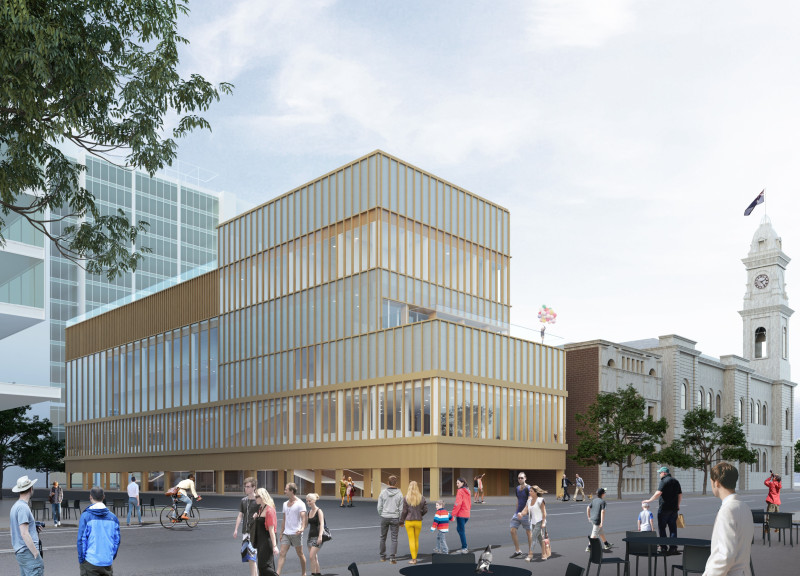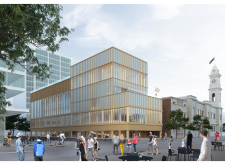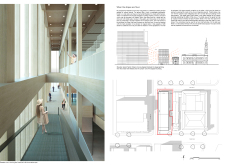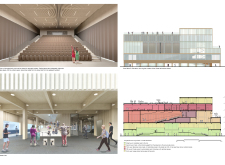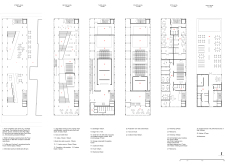5 key facts about this project
At its core, the project embodies a blend of modern aesthetics and practical usability, targeting a diverse range of activities and offering multifunctional spaces that enhance community interaction. The design is informed by an overarching concept that prioritizes sustainability and responsiveness to its surroundings. This is exemplified in the selection of materials, which not only offer aesthetic appeal but also contribute to the building’s performance and resilience.
The architectural framework is predominantly constructed from reinforced concrete, chosen for its durability and thermal mass properties. This is supplemented with large expanses of glass, creating transparency that invites natural light into the interiors while fostering a connection with the outdoors. The use of wood elements, such as sustainably sourced timber, introduces warmth and texture, contrasting with the more industrial components. Additionally, elements like steel offers structural integrity and modern appeal. The combination of these materials results in a visual harmony that reflects both contemporary and organic design principles.
The project effectively integrates green spaces into its design, with landscaped areas that not only enhance aesthetic value but also promote biodiversity and ecological health. Roof gardens and vertical green walls contribute to the urban microclimate and offer occupants a retreat from the busy environment. Such considerations demonstrate an understanding of architecture as not merely a built entity but as a participant in its ecological system.
Spatial organization within the project is designed with an emphasis on flow and accessibility. The layout encourages movement and interaction, with dedicated spaces for both individual and communal activities. Open-plan areas foster collaboration and social engagement, while quieter zones provide necessary respite, making the building suitable for varied functions. This versatility is a key strength of the design, catering to the needs of its diverse users.
Unique design approaches can be observed in the incorporation of passive design strategies. These strategies optimize energy performance by strategically placing windows for natural ventilation and sunlight, reducing the need for artificial heating and cooling. This aspect highlights a contemporary awareness of energy efficiency, showcasing the project’s commitment to reducing its carbon footprint.
The architectural outcome reflects a deep engagement with the site’s cultural and historical context. Thoughtful attention to local materials and building traditions results in a sense of place that is both respectful and innovative. This sensitivity to context not only enhances the architectural narrative but also reinforces community identity.
Moreover, innovative technology solutions are integrated throughout the project, facilitating smart building management systems that optimize resource use and enhance occupant comfort. This technological aspect complements the architectural design, creating a seamless user experience that merges tradition with modernity.
For those interested in exploring the finer details of this architectural endeavor, it is encouraged to review the architectural plans, sections, and design visuals for a deeper appreciation of the concepts and intentions behind this project. Each element of the design aligns with the overarching vision, illustrating how thoughtful architecture can create spaces that are not only functional but also inspirational. Discover the intricacies of this architectural project for a comprehensive understanding of its design philosophy and execution.


